Oaxacan Chiles and other delicacies

This past weekend I received a marvelous gift from Mike Beary, of the restaurant Zocalito in Aspen who calls himself “the only importer of rare Oaxacan chiles.” I don’t know that that is exactly true because The Chile Guy used to bring them in around the time that my book, The Food and Life Of Oaxaca, was published in 1997 by Macmillan but these chiles are gorgeous, aromatic and will allow me to make true Oaxacan recipes without any substitution. I will be testing recipes with them and will keep you posted. In the meantime, please read about Mike’s efforts to keep farmer’s growing these special and rare varieties of chiles on Zocalito’s website
Oaxaca has traditionally been home to a wealth of different chile varieties, especially ones raised for drying. The cuisine was known for a symphony of distinctive chile flavors, with cooks skillfully choosing and blending many kinds that are not grown in other parts of Mexico. I remember first coming to the great Benito Juárez market of Oaxaca City in 1985 and staring at whole arrays of red, yellow, or black dried chiles I had never seen before, realizing how much more I still had to learn about the classic Mexican spice.
- Chilhuacle Negro
- Chilhuacle Rojo
- Chilhuacle Amarilllo
- Chile Pasilla de Oaxaca
- Taviche
- Chilcosle
All this is sadly changing as more and more cooks in the state take to substituting readily available, cheaper varieties like ancho chiles that are known everywhere in Mexico for the rarer, more expensive local kinds such as chilhuacle negro and chilhuacle rojo. The result is that Oaxacan food is inevitably beginning to lose some of what makes it Oaxacan. Yet I see other more hopeful signs as well. Quite late in the preparation of this book I was overjoyed to find U.S. mail order sources for some of the best Oaxacan dried chiles. I believe that this heritage will not only survive in corners of Oaxaca but spread wherever Oaxacan flavors are cherished.

My recipes do not call for any irreplaceable type of Oaxacan fresh chile. With dried chiles I follow a case-by-case policy on substitutions. Often I give common multipurpose chiles and the unique local ones as alternatives, figuring that it is better to make the dish with a slightly less characteristic chile than not to make it at all.
Before you begin looking for chiles, it is good to understand why they are used in the first place. I hope that anyone cooking from this book has graduated from the idea that chiles just make a dish hotter. This is an oversimplification, especially in the case of Oaxacan cuisine.
The truth is that the variable hotness of chiles (some are no hotter than bell peppers) goes along with the range of other effects. There are times when they are used very simply, others when they add deep complexity. For example, Oaxacans do not like a lot of fussy flavors in fresh uncooked salsas. Here something with a fresh green taste and clean, direct heat like the excellent local jalapeños and serranos should predominate. Dried chiles, however, are valued for a spectrum of flavor possibilities. They are meant not just to detonate on the palate but to add particular notes that are beautifully brought out in drying — sweet, sharp, fruity, nutty, woodsy, and so forth. When rehydrated and puréed, dried chiles also add body to moles and other sauces. In very simple cooked sauces they may almost be the only thickening.
Here is an article from he February 21, 2013 USA Today
http://www.usatoday.com/story/travel/columnist/greatamericanbites/2013/02/21/great-american-bites-a-taste-of-oaxaca-in-high-rent-aspen/1935171/
NOTE: Handle both fresh and dried hot chiles with respect for the stinging substance called capsaicin that gives them their bite. Be sure to wear rubber gloves when working with any really hot chiles. If your bare fingers touch them, wash your hands carefully before touching your face and especially your eyes!

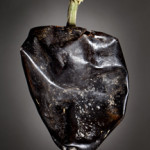
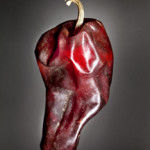
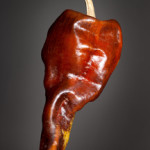

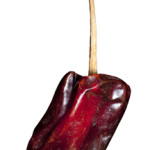
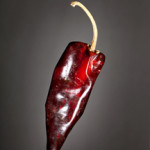







 Twitter
Twitter